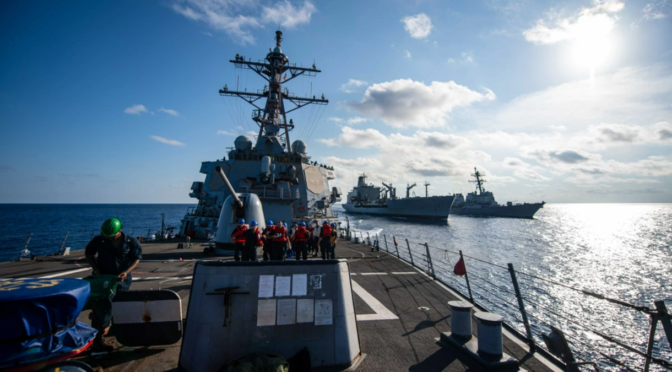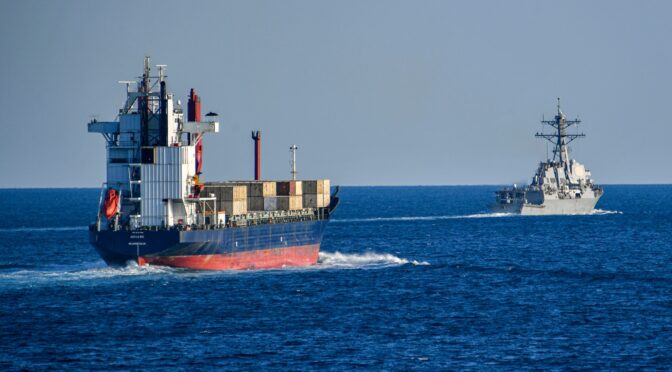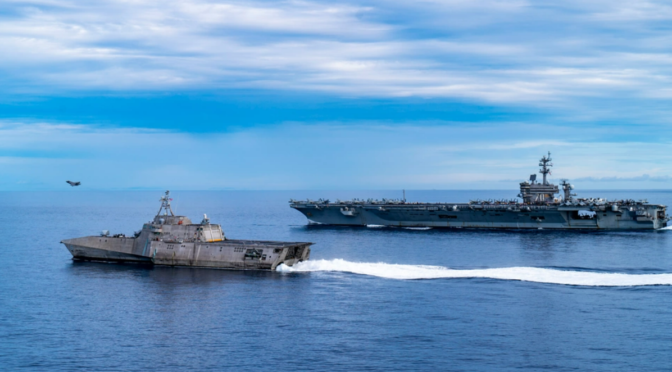Notes to the New Administration Week
By Clay Robinson
In the tally of winners and losers in the Houthi’s Red Sea attacks, China continues to benefit from others’ economic losses. Several critics have pointed to evidence of Chinese opportunism in the Red Sea in the form of negotiated safe passage for Chinese shipping from Houthi attacks. Meanwhile, others have highlighted the inconvenient truth that as of January 2025, the U.S. Navy has spent billions to counter relatively inexpensive Houthi missiles and drones. Yet China’s most significant victory may yet to be realized. China’s relatively unfettered access to significant quantities of data on U.S. combat engagements, and their ability to glean the capabilities and limitations of critical U.S. Navy air and missile defense capabilities, may represent a far greater boon for them in the long run.
Evidence of Chinese efforts to access, exfiltrate, and reverse engineer U.S. military technologies is plentiful. China may be learning even more from watching and collecting on U.S. Navy engagements against hundreds of Iranian missiles and drones launched by the Houthis. From the relative safety of the nearby Chinese base in Djibouti and the warships of the People Liberation Army-Navy (PLAN) Naval Escort Task Force (NETF) in the nearby Gulf of Aden, China is positioned to witness and collect on some of the U.S. Navy’s most advanced air and missile defense capabilities during real-world combat operations. It is also likely that China is targeting the data-driven lessons learned process that is regularly pushing capability updates out to warships in the Red Sea. It is possible that this collection is providing China with invaluable lessons on how to counter U.S. Navy capabilities should there ever be a direct confrontation between the two global superpowers.
The purported benefits of these Red Sea operations to the U.S. have come under significant scrutiny, but this additional factor could make the future cost-benefit analysis even more difficult to support. Decisions about when and how to reveal or conceal military capabilities require careful consideration of the effort an adversary would have to expend to counter the capability. Therefore, the capabilities that are relatively easy and inexpensive to counter should be protected rather than revealed in a fashion that allows adversaries to learn about them. The U.S. could even consider its own collection operation to better understand how China is making use of Red Sea combat data to sharpen its forces.
The questions for U.S. Navy decision-makers are threefold. First, are the air and missile defense capabilities of the Aegis Weapon System in danger of being countered by current or future Chinese anti-ship cruise missiles, electronic warfare, or cyber capabilities? Second, does not just routine, but nearly persistent use of these critical capabilities for over a year to defend freedom of navigation in the Red Sea constitute a fully-informed decision that recognizes the potential consequences of third-party collection by China? Third, is access to collection on these operations unintentionally helping China improve their own missile capabilities?
The U.S. Navy should consider the unintended consequences of revealing sensitive air and missile defense capabilities to China through persistent display of these systems during Red Sea operations. The answers to these questions could lead to a reevaluation of U.S. strategy in the Red Sea.
Commander Clay Robinson is a retired U.S. Navy surface warfare officer with over 25 years of experience in naval operations and strategic planning. He is currently an adjunct instructor with the U.S. Naval Community College.
The views expressed here are those of the author alone and do not necessarily represent the official views, policies, or positions of the U.S. Department of Defense or its components.
Featured Image: The Arleigh Burke-class guided-missile destroyer USS Laboon (DDG 58) breaks away from formation, concluding a replenishment-at-sea July 3, 2023. (U.S. Navy photo by Mass Communication Specialist 2nd Class Jacob Hilgendorf)




